Posts: 144
Threads: 22
Joined: Dec 2021
Reputation:
0
Some good birds have been around the cabin lately that I'd like to share. It is along the river in primarily spruce-fir forest with components of aspen, willow, alder and mountain mahogany.
It would be great for this to become an open and ongoing thread or sub forum for anyone to contribute their sightings, photos or questions about birds on their property or in the mountain areas around us.
The kinds and numbers of birds can vary dramatically at different elevations and habitats. Folks in Jamestown, Bar-K, Ward and Peaceful Valley will often see very different regular species and numbers of those birds. Rare birds can show up most anywhere. Note the Blue-footed Booby that landed in Lefthand Canyon! Or, the Magnificent Frigate at Granby Reservoir! Please feel free to post your observations so we can all learn.
Here at the cabin, in addition to the regular year-round wintering birds like chickadees, nuthatches, woodpeckers, Steller's Jays and Clark's Nutcrackers, I've seen some relatively rare birds around the house. They include:
Two Red (aka Eastern) Fox Sparrows that arrived together and remained for three days.
A juvenile White-crowned Sparrow that stayed for a few days.
A male American Goldfinch in winter plumage that made a a quick stop.
A female type Cassin's Finch that visited briefly, a bird that's been rare here over several years.
Two female Evening Grosbeaks, another species that's been rare here for some years.
A Sharp-shinned Hawk blasted through a few times, and last Sunday, one minute later a....
Northern Shrike came in an attempt to take birds coming to feeders. Some visiting birders were here when we spotted the shrike on Dec. 2. I saw it again trying to take small birds outside the dining room window. I snapped a few pics as it was watching birds from below the feeders and again hunting around the yard.
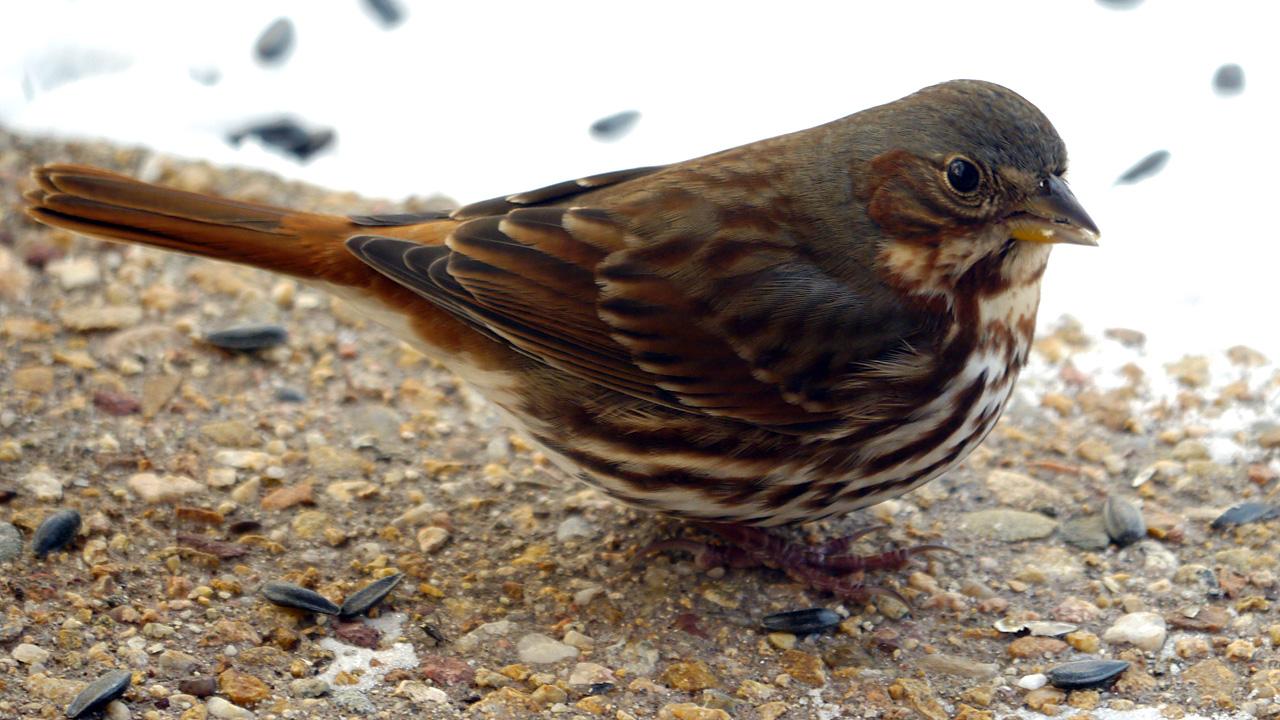


Posts: 57
Threads: 21
Joined: Dec 2021
Reputation:
0
These are great views and photos, Steven! Thanks for sharing so we know what to be on the lookout for.
I like the idea of an open thread for ongoing sightings.
Laurel
Posts: 117
Threads: 41
Joined: Oct 2021
Reputation:
0
Awesome photos Steve...
What do you shoot with?
Enjoy your posts a bunch.
Posts: 144
Threads: 22
Joined: Dec 2021
Reputation:
0
12-12-2022, 11:22 PM
(This post was last modified: 12-13-2022, 07:53 AM by Steven B in PV.)
Thanks, Sal. I use a Panasonic GH2 that's 11.5 years old and maybe 10 generations out of date. It replaced a 2007 Pana FZ10, an original superzoom digital (which is still in use). The Pana GH2 is a smaller camera than a DSLR. It's micro four-thirds format has a smaller sensor but it works for this opportunistic shooter. My philosophy has been that if you don't have a camera at the ready then you miss the opportunity. Big DSLRs with big lenses are not conducive to every day carry. At least not for sane folks who aren't so hardcore to sit inside blinds for endless hours in freezing cold or stifling hot weather.
Someday I might upgrade to more a advanced version of the Pana GH line if they are compatible with the fine Lumix lenses I already have. I mostly use the 14-140 lens (equivalent to 28-280 in 35mm). For shooting hummingbird eyelashes and nasal mites I use a Panasonic Lumix Leica 1:2.8/45 macro. For more distant subjects I occasionally use the Lumix 1-4.0-5.6/100-300 telephoto (equivalent to 200-600 in 35mm).
I usually shoot hand held. For me, the challenge is shooting small birds to capture what I see. It's much easier to photograph elephants, eagles, cranes and herons.
Posts: 144
Threads: 22
Joined: Dec 2021
Reputation:
0
12-15-2022, 07:44 PM
(This post was last modified: 12-15-2022, 09:01 PM by Steven B in PV.)
This morning I found another good bird feeding on sunflower below the feeders. The Harris's Sparrow is an arctic bird that nests in the taiga of northern Canada. It is the largest sparrow in North America and a rare winter visitor to Colorado. I've seen them many times in PV and at the Palisade farm. This is a 1st year bird that will officially become an adult, or 2nd year bird, on January 1st.
My first Harris's in Peaceful Valley was 35 years ago and I watched as it was taken down and eaten by a Northern Pygmy Owl. The sparrow is an inch longer at 7.5", but half the 2.5 ounce weight of the owl.
Not a great pic but diagnostic enough. I need to clean my windows.
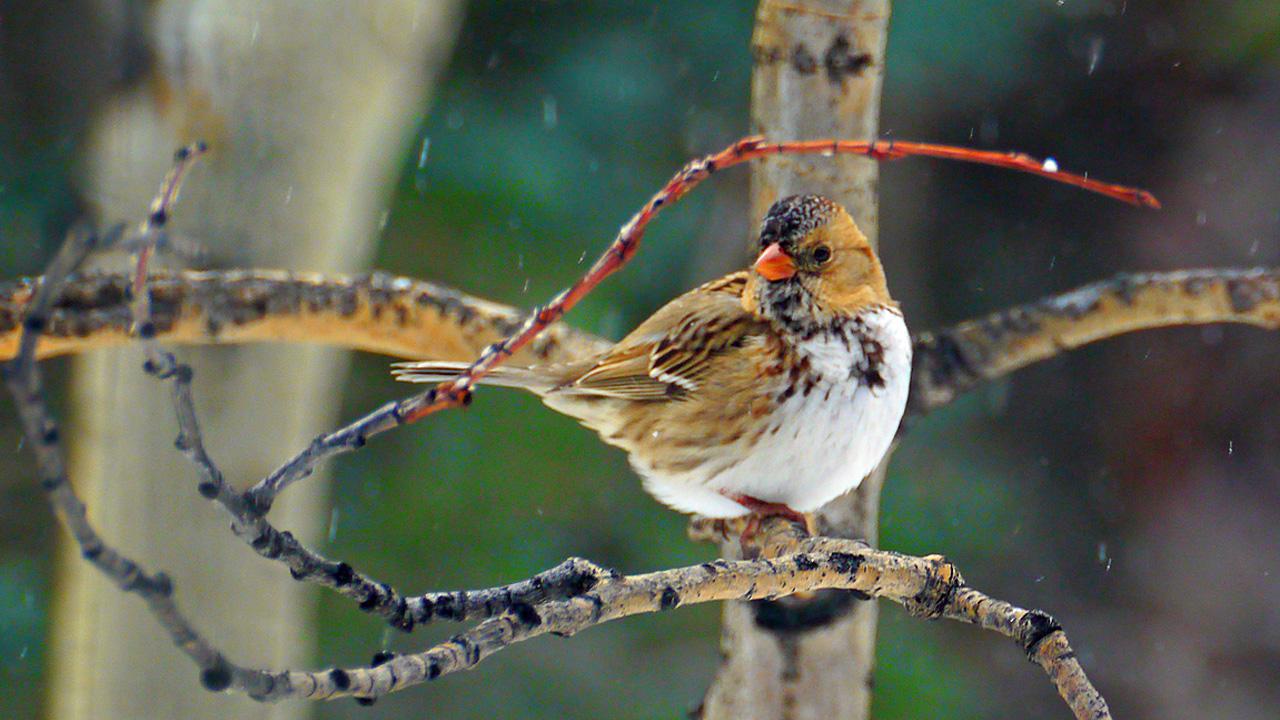
Two weeks ago, my good neighbor Sue said that she had seen two scrub jays in her yard, the first she'd ever seen in PV in over 30 years. Sue is a good birder and bird photographer but didn't have time to photo the jays.
I've seen Woodhouse's Scrub Jays in PV on several occasions, mostly in August and September as post-breeding wanderers. They are rare in the higher mountains and having them here at the end of November is remarkable. Here's one I caught at the feeder a couple of years ago.

Posts: 281
Threads: 45
Joined: Nov 2021
Reputation:
0
12-15-2022, 08:25 PM
(This post was last modified: 12-16-2022, 09:59 AM by John Hardman.)
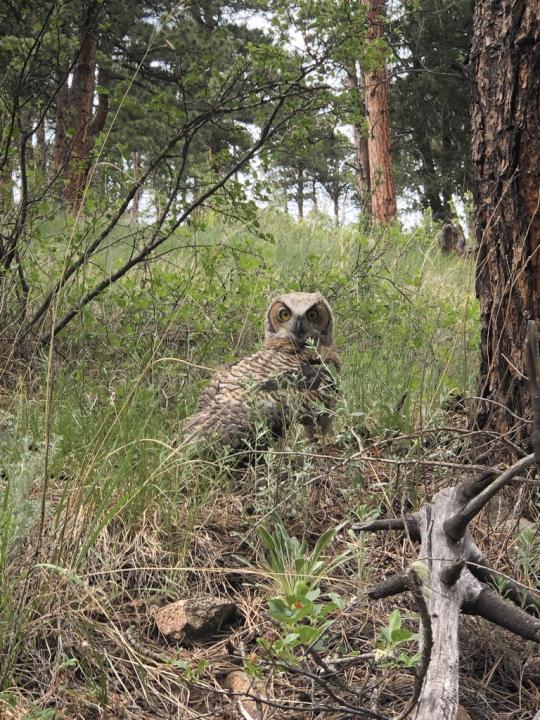

Hey Steve: This is a shot I took this spring up Gillespie Gulch in JT. Lila and I were coming down the upper road from Owens Flats.
As we descended the gulch an adult Great Horned Owl flew down the gulch in front of us. When I got to the stump she had flown from,
I was scanning the ground for a possible feather? As my eyes worked up the bank to where she had been, Voila! There stood Bubba!
He looked a bit surprised and froze for a few minutes. Kinda like saying "Who, ah ah Who, ah Who Are You?" I got several shots before
Mom called Bubba from down the gulch. And "POOF" he silently flew away. Karla got more shots after that and turns out Bubba
had a brother or sister too. Great Horned Owls in that gulch as long as I can remember.
Posts: 144
Threads: 22
Joined: Dec 2021
Reputation:
0
Excellent, John! It's always special to encounter owls. Lately, I've been hearing a male Great Horned calling from a side canyon here in PV.
Last spring, one of my trail cams by the cabin caught a Great Horned that had come to ground in the wee hours for a rodent under the window feeders. With trail cams you get to see all the wildlife around the property you'd otherwise miss.
For instance, the lost cat that I first saw and captured here on Nov 13, appeared on cams beginning Oct 25. At night on Oct 26, the cat walked through our meadow, and eight minutes later a large black bear followed in the same track, clearly following the cat's scent. That was the last bear through our property this year.
Posts: 144
Threads: 22
Joined: Dec 2021
Reputation:
0
The Harris's Sparrow that arrived 30 days ago continues to feed around the yard. Chances are that this bird will remain until late March or early April when it heads to it's breeding grounds in northern Canada. If so, it will begin singing it's territorial song here, one that few people have an opportunity to hear.
Other recent yard birds include an American Tree Sparrow, and small flocks of Pygmy Nuthatches, Red Crossbills and Pine Grosbeaks. Pine Grosbeaks are a favorite bird partly because of their cheerful "wheat-wheat" call, and because they are so approachable. They usually come to feed on the ground when there is fresh snow, typically in groups of 8 to 40 birds. My neighbor gets many more, sometimes 200-400 at a time. It probably helps that she feeds sunflower by the ton.
Here, Pine Grosbeaks typically nest in the higher elevation spruce-fir forest from 8500 ft. to timberline. It happens to be this week's Bird of the Week, featured by the American Bird Conservancy. A great write up can be found at: https://abcbirds.org/pine-grosbeak
I support the American Bird Conservancy for the great work they do including the Cats Indoors program. https://abcbirds.org/program/cats-indoors/
Here are pics of male and female Pine Grosbeaks taken at my neighbor's home yesterday using my cell phone through a spotting scope.
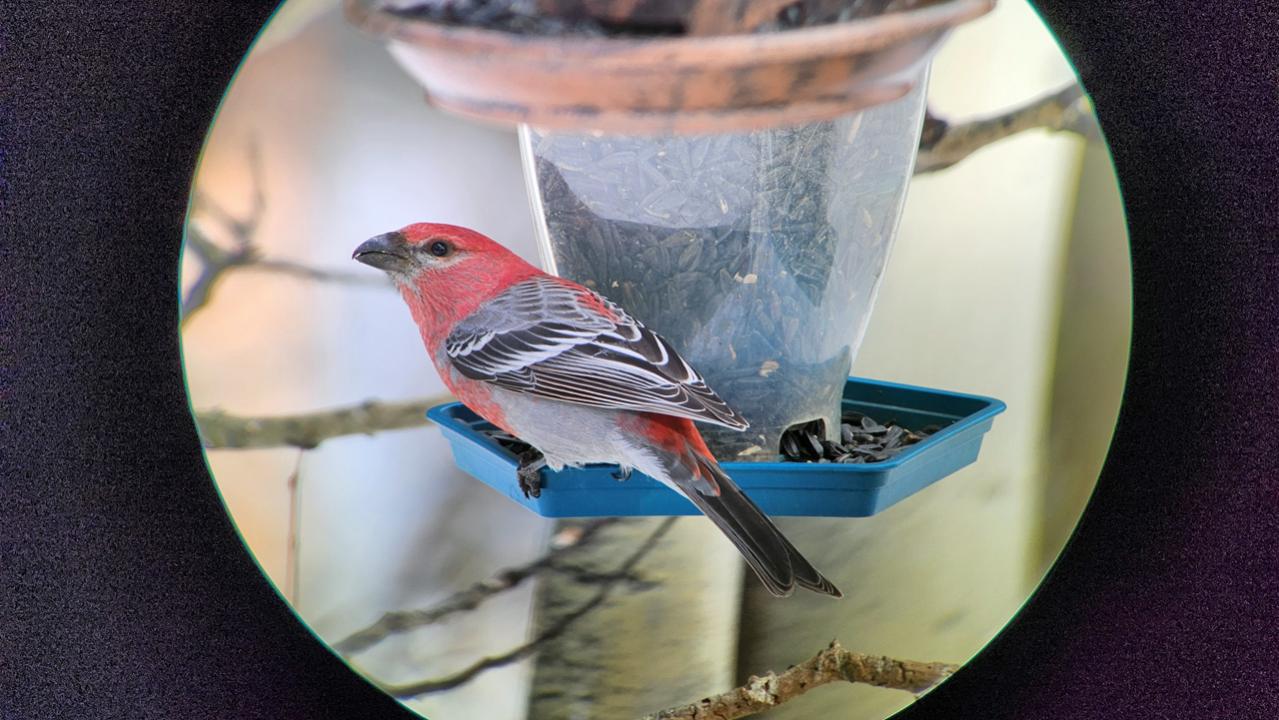
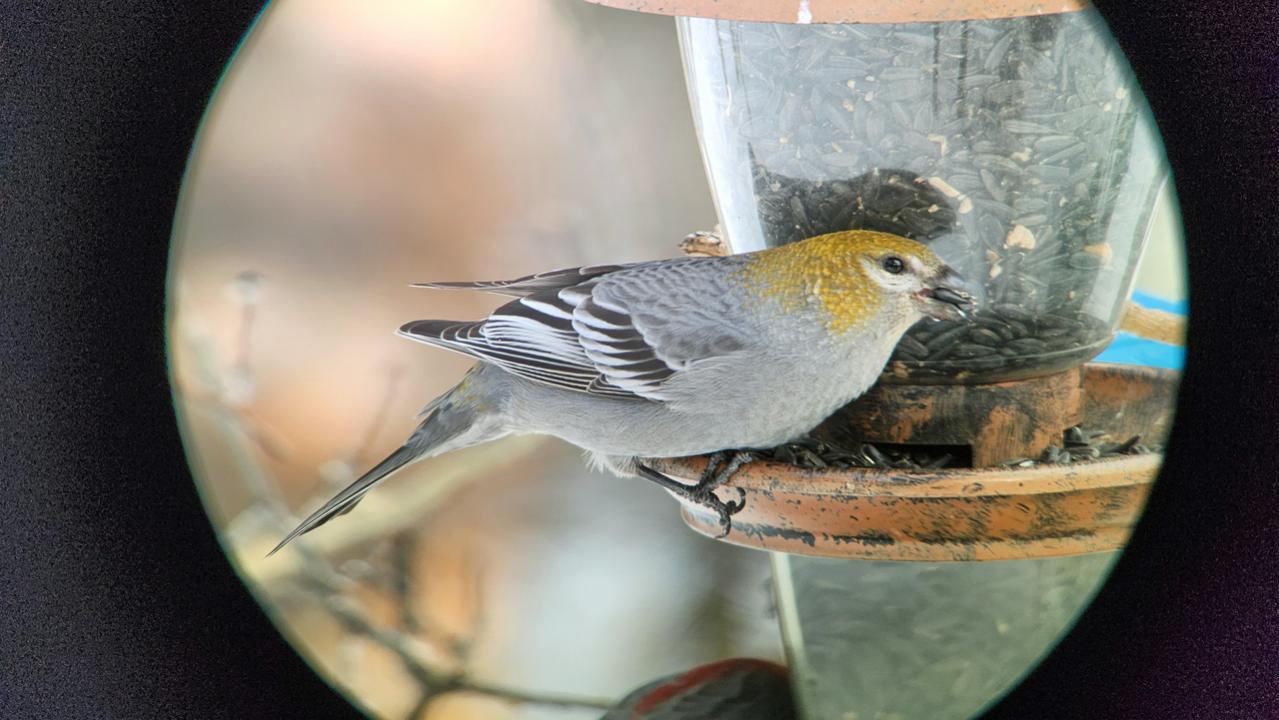
Posts: 281
Threads: 45
Joined: Nov 2021
Reputation:
0
Awesome shots of the Pine Grosbeaks Steve! Beautiful species!
Thanks for sharing.
Posts: 144
Threads: 22
Joined: Dec 2021
Reputation:
0
Thanks! I'm interested in knowing what birds that other folks are seeing. As close as we are from the Bar-K, JT, Ward and Allenspark, there can be different species and very different numbers depending on the forest type and micro habitat.
Here's a photo taken today of the Harris's Sparrow outside the dining room window. How about that camo?
Cheers!
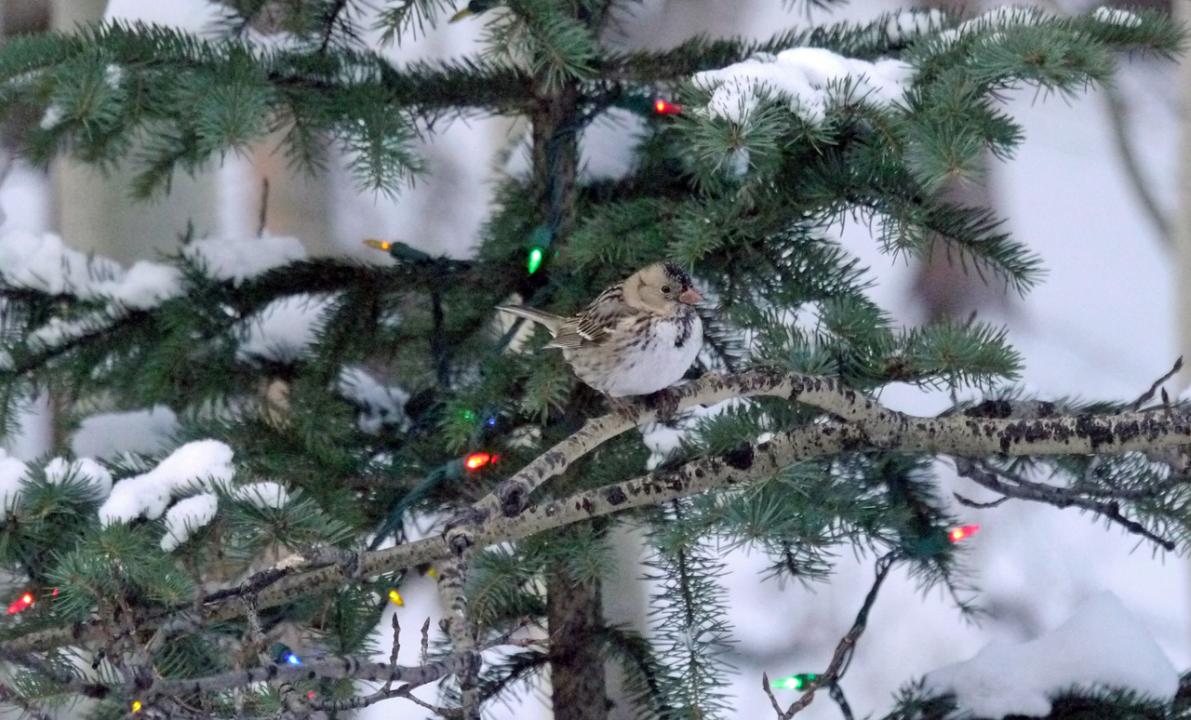
Posts: 281
Threads: 45
Joined: Nov 2021
Reputation:
0
What sparrow ???? 
Posts: 24
Threads: 5
Joined: Nov 2021
Reputation:
0
This is so wonderful to read and look. We're just getting into birds. It's so delightful.
Posts: 32
Threads: 16
Joined: Dec 2021
Reputation:
0
Steven, as a “functional birder” who simply does the job and rarely birds for pleasure, I was curious about the red Fox Sparrow and why you called it Eastern. Lo and behold the breeding and wintering range maps! I never knew! Does that make our summer breeders the slate-colored variety?
And how awesome to see a Northern Shrike in December. Normally I only see them for a short period of migration- on the plains, and once at the Blue Jay Mine, but only recorded one breeding pair in the summer.
The grosbeaks are simply special, elegant and fun to discover.
Great photos. Maybe one day I’ll learn how to take photos but don’t anyone hold your breath 
Posts: 144
Threads: 22
Joined: Dec 2021
Reputation:
0
Hi Michelle! Yes, small numbers of Slate-colored Fox Sparrow breed in the higher elevation willow carrs along the northern Front Range. We see them in the glacial moraine between the Peaceful Valley and Camp Dick campgrounds. They can also be found around Brainard, Long, Isabelle and Mitchell Lakes. Most anywhere above where there is wetland willow. Probably along the South St. Vrain above Overland Road. Slate-colored are more numerous on the west side of the divide and north. Much smaller populations live here.
Red Fox Sparrow is rare in CO, but fairly common in the midwest during winter. I've seen them here every 3 or 4 or 5 years but having two together this year was a first. A few years ago in spring, both Red and Slate-colored Fox Sparrows were present at the same time. Also a first. Wish I could have photographed them together.
Birds have wings and anything unusual can show up anytime.
BTW, you once mentioned interest in mounting a dipper box under the Lefthand/Jim Creek bridge. I have a plan and a dipper box ready to mount. We should get together in early May.
Cheers,
Steve
|








